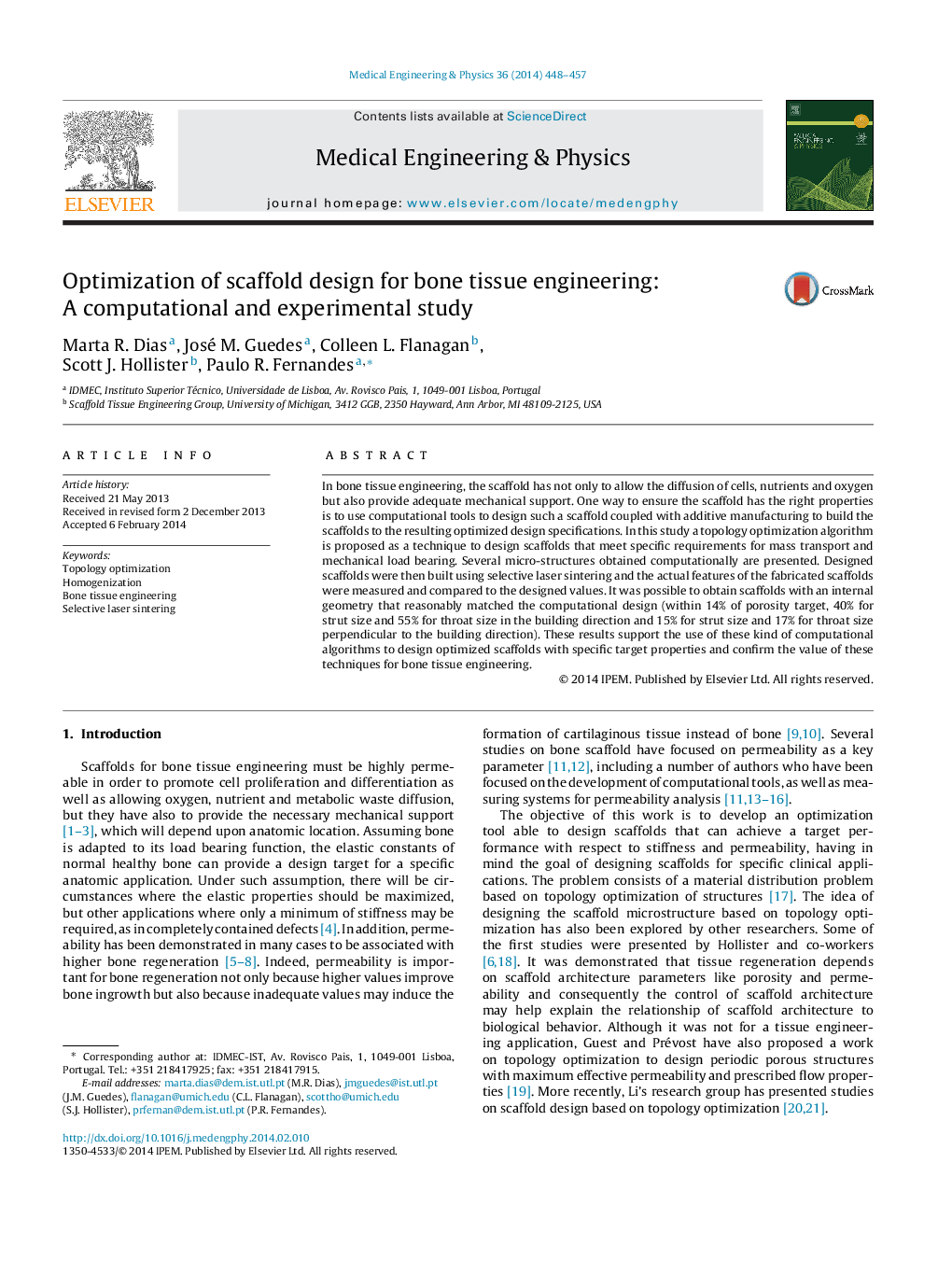| Article ID | Journal | Published Year | Pages | File Type |
|---|---|---|---|---|
| 875923 | Medical Engineering & Physics | 2014 | 10 Pages |
In bone tissue engineering, the scaffold has not only to allow the diffusion of cells, nutrients and oxygen but also provide adequate mechanical support. One way to ensure the scaffold has the right properties is to use computational tools to design such a scaffold coupled with additive manufacturing to build the scaffolds to the resulting optimized design specifications. In this study a topology optimization algorithm is proposed as a technique to design scaffolds that meet specific requirements for mass transport and mechanical load bearing. Several micro-structures obtained computationally are presented. Designed scaffolds were then built using selective laser sintering and the actual features of the fabricated scaffolds were measured and compared to the designed values. It was possible to obtain scaffolds with an internal geometry that reasonably matched the computational design (within 14% of porosity target, 40% for strut size and 55% for throat size in the building direction and 15% for strut size and 17% for throat size perpendicular to the building direction). These results support the use of these kind of computational algorithms to design optimized scaffolds with specific target properties and confirm the value of these techniques for bone tissue engineering.
